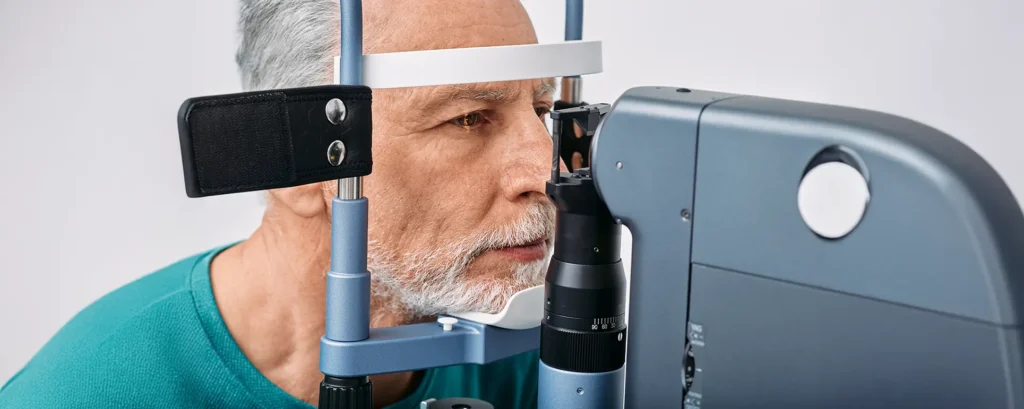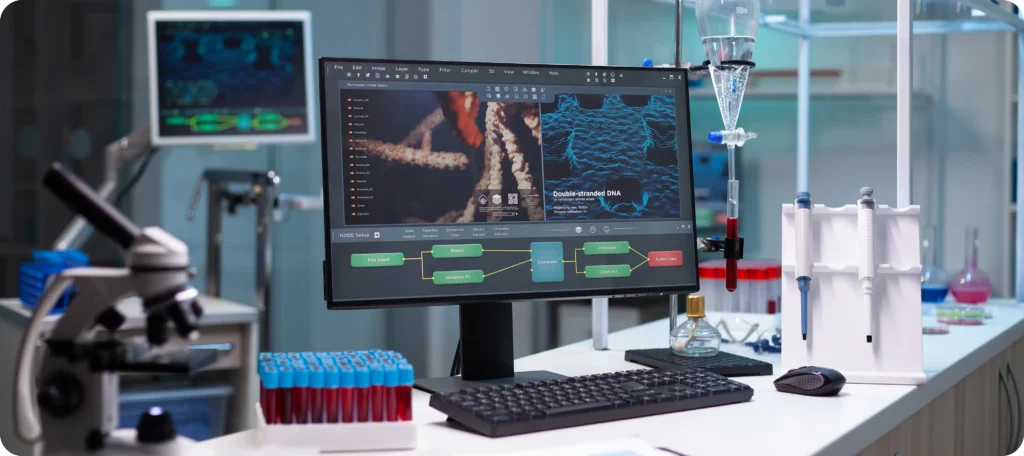When you think about cataract surgery, the first thing that comes to mind is probably the replacement of a cloudy lens with an artificial one. For decades, intraocular lenses (IOLs) have been the gold standard of treatment, restoring vision to millions of people worldwide. But what if the future of cataract surgery didn’t involve artificial implants at all? What if we could actually regenerate the natural lens using the power of stem cells?
This is not just a fantasy or an idea confined to futuristic medical journals. Research teams around the world are beginning to show that it may be possible to restore the eye’s natural lens through carefully guided stem cell–based therapies. Instead of inserting an artificial replacement, surgeons could stimulate the eye to grow a new lens from its own cellular structures.
In this article, we’ll walk through the science behind lens regeneration, explore recent breakthroughs in stem cell research, and discuss what this could mean for patients in the future. We’ll also look at some of the hurdles, including ethical considerations, clinical safety, and the practicalities of rolling out such treatments. By the end, you’ll have a clear picture of why lens regeneration could be one of the most exciting shifts in ophthalmology since the invention of modern cataract surgery.
Why Replace When You Could Regenerate?

Cataract surgery today works by removing the clouded natural lens and replacing it with an artificial intraocular lens. This is highly effective and safe, but it has limitations. Artificial lenses don’t always provide the same flexibility as the natural lens, which can change shape to focus on objects at different distances — a process known as accommodation.
Most IOLs correct vision at one focal point. While premium multifocal and accommodating lenses exist, they can sometimes cause visual side effects such as glare, halos, or reduced contrast sensitivity. Moreover, the implanted lens does not “grow” with the body, nor does it repair itself.
Regenerating the natural lens would be a completely different story. It would mean restoring not only transparency but also accommodation — effectively giving patients back the lens they had in their younger years. Imagine walking out of cataract surgery not just with clear sight, but with the ability to read a book, look across a room, and then glance at the horizon without the need for glasses or contact lenses. That’s the promise of stem cell–driven lens regeneration.
The Science of Lens Regeneration
To understand how regeneration might work, you need to know a little about the biology of the lens. The lens is a transparent, biconvex structure made mostly of proteins and water. It is covered by a thin layer of epithelial cells on its anterior surface. These cells are capable of dividing and differentiating into lens fibres, which are then packed into the body of the lens to maintain its transparency and function.
In theory, if we could harness the regenerative power of these epithelial cells — or introduce new stem cells that could mimic their role — we might be able to grow an entirely new lens. Stem cells are unique because they can differentiate into a wide variety of cell types, including lens cells. By providing the right environment, growth factors, and surgical conditions, scientists believe it is possible to stimulate regeneration inside the eye itself.
Breakthrough Studies in Stem Cell Lens Repair

One of the most talked-about breakthroughs in recent years came from a team of researchers in China and the United States, who published their findings in Nature in 2016. They demonstrated that cataract surgery techniques designed to preserve lens epithelial stem cells in infants could lead to the regeneration of a functional lens within months.
In their study, twelve children under the age of two with congenital cataracts underwent a modified surgical procedure that left the lens capsule largely intact. Remarkably, all of the children regenerated a transparent, functional lens within several months. Their visual outcomes were promising, and complications were fewer than with traditional surgery.
While this research was conducted on infants — who have higher regenerative potential than adults — it opened the door to the possibility that with further refinement, lens regeneration could be applied across wider age groups. Since then, scientists have been working on ways to replicate these results in older patients, where regenerative capacity is naturally reduced.
Challenges of Applying Regeneration in Adults
The difficulty with adult cataract patients is that the regenerative potential of lens epithelial cells decreases with age. In children, these cells are abundant and active, but in adults, they are fewer in number and less responsive to repair signals.
One approach being investigated is to boost the activity of residual stem cells using molecular signals, such as growth factors or small-molecule drugs, that encourage them to divide and form new lens fibres. Another strategy is to transplant induced pluripotent stem cells (iPSCs) into the lens capsule. These iPSCs can be created from a patient’s own skin or blood cells, reprogrammed into a stem cell state, and then directed to become lens cells.
This approach could overcome the decline in natural regenerative ability, but it raises further challenges such as ensuring proper transparency, preventing scarring or fibrosis of the capsule, and guaranteeing long-term stability of the regenerated tissue.
The Role of Tissue Engineering
Tissue engineering plays a crucial part in this story. It’s not enough to simply have cells that can form a lens — they also need the right structural environment in which to grow. Researchers are developing bioengineered scaffolds that can guide stem cells into the correct arrangement, mimicking the architecture of the natural lens.
These scaffolds can be biodegradable, dissolving once the new lens structure has been established. Others might remain in place as a supportive framework. The key is that they must be transparent and biocompatible to avoid interfering with light transmission through the eye.
Some teams are experimenting with nanotechnology-enhanced scaffolds, designed with nanoscale grooves or patterns that encourage cells to align in the way they do in a natural lens. This combination of stem cells and smart biomaterials could prove essential to making regeneration a clinical reality.
Early Clinical Trials and Human Applications
So far, human trials of lens regeneration are limited, but progress is steady. The most successful attempts have been in infants, as mentioned earlier, but animal models continue to provide valuable insights for adult applications.
For instance, studies on rabbits and primates have shown that lens regeneration is possible when epithelial stem cells are preserved during surgery. These findings support the idea that the technique could be translated into older patients with the right stimulation.
Clinical translation will depend on proving long-term safety. Researchers need to ensure that regenerated lenses do not become cloudy again, that they maintain optical quality over time, and that the process does not trigger harmful side effects such as inflammation or abnormal tissue growth.
Ethical Considerations in Stem Cell Research
As with any form of stem cell therapy, there are ethical questions to consider. The use of embryonic stem cells has historically raised debates, though in this context much of the research focuses on adult stem cells or iPSCs, which are generated without involving embryos.
Another ethical consideration lies in access. If stem cell–based cataract treatments become possible, will they be available to everyone, or only to those who can afford premium care? Cataracts are the leading cause of blindness worldwide, especially in low- and middle-income countries. Regenerative therapies could transform lives, but they must be made scalable and affordable to have a global impact.
Finally, the ethics of long-term unknowns must be weighed. Regenerated lenses may work in the short term, but if unexpected side effects occur years later, the implications for patients could be significant. Transparent reporting, robust clinical trials, and international oversight will be crucial to guide this emerging field responsibly.
Could Regeneration Replace IOLs?
The big question patients and surgeons alike will be asking is whether regenerated lenses could one day completely replace artificial IOLs. For now, IOLs remain the best and most reliable option for treating cataracts, with decades of safety data behind them.
However, if stem cell therapies mature to the point where regenerated lenses can reliably restore both clarity and accommodation, the incentive to move away from artificial implants will be strong. Patients would benefit from a more “natural” solution, and the optical quality of vision might surpass even the best premium IOLs.
That said, it may not be a case of “either/or”. It’s possible that regenerative therapies could complement IOL technologies, perhaps by combining regeneration with new types of bio-integrated implants. The future may see a spectrum of options tailored to individual patients’ needs.
Future Directions for Research
The next decade will be critical for lens regeneration research. Key areas of focus include:
- Improving adult regeneration – finding ways to enhance the capacity of older eyes to grow new lenses.
- Optimising stem cell delivery – ensuring cells are placed in the right environment and integrate seamlessly.
- Refining scaffolds and biomaterials – developing transparent, biocompatible structures that guide proper lens architecture.
- Ensuring optical quality – preventing issues such as aberrations, scarring, or incomplete regeneration.
- Scaling clinical trials – moving from small, highly controlled studies to broader trials across diverse populations.
If progress continues, we may see the first widely available regenerative cataract therapies within a generation. For now, the research remains experimental, but the pace of development is encouraging.
The Patient Perspective
For patients, the idea of regenerating their own lens is both exciting and daunting. On the one hand, it offers the possibility of a once-in-a-lifetime repair that restores natural vision, without relying on artificial implants. On the other, it is a step into the unknown, where long-term outcomes are not yet proven.
Many patients value tried-and-tested methods, and cataract surgery with IOLs has an outstanding safety record. For lens regeneration to become mainstream, patients will need reassurance through evidence, testimonials, and clear communication of risks versus benefits.
Interestingly, younger patients with congenital cataracts may be the first to benefit from regeneration on a wider scale. For them, the ability to restore natural lens function early in life could make a profound difference to lifelong visual outcomes.
Conclusion
Stem cell–based lens regeneration represents one of the most ambitious frontiers in ophthalmology. While cataract surgery as we know it is already a highly successful operation, the possibility of giving patients back their natural, accommodating lens is something entirely new.
The journey from laboratory experiments to clinical reality is never straightforward, but the progress so far suggests that lens regeneration is not just wishful thinking. With further research, refinement, and ethical oversight, it could redefine how we treat cataracts in the future — perhaps even eliminating the need for artificial lenses altogether.
For now, the idea remains experimental, but the direction is clear: the future of cataract treatment may not be replacement, but regeneration.
References
- Lin, H., Cheng, A. & Li, J. (2016) ‘Lens regeneration using endogenous stem cells with gain of visual function’, Nature, 531(7594), pp. 323–328. Available at: https://pubmed.ncbi.nlm.nih.gov/26958831/ (Accessed: 22 October 2025).
- Liu, Z., Yang, Q. & Zhang, Y. (2020) ‘Lens regeneration in humans: using regenerative potential for tissue repair’, Open Eye Science, 12, pp. 15–27. Available at: https://www.ncbi.nlm.nih.gov/pmc/articles/PMC7729322/ (Accessed: 22 October 2025).
- Xiao, Y., McGhee, C.N.J. & Zhang, J. (2024) ‘Adult stem cells in the eye: identification, characterisation, and therapeutic application in ocular regeneration’, Clinical & Experimental Ophthalmology, 52(2), pp. 148-166. DOI: 10.1111/ceo.14309. Available at: https://pubmed.ncbi.nlm.nih.gov/38214071/ (Accessed: 22 October 2025).
- Saranya, P., et al. (2023) ‘Towards the identification and characterisation of putative adult stem cells in the human lens epithelium’, Cells, 12(23), 2727. Available at: https://www.mdpi.com/2073-4409/12/23/2727 (Accessed: 22 October 2025).
- (2018) ‘Scientists in China regenerate lens in human eye’, Nature, 7 March 2018. Available at: https://www.nature.com/articles/d41586-018-00548-x (Accessed: 22 October 2025).

